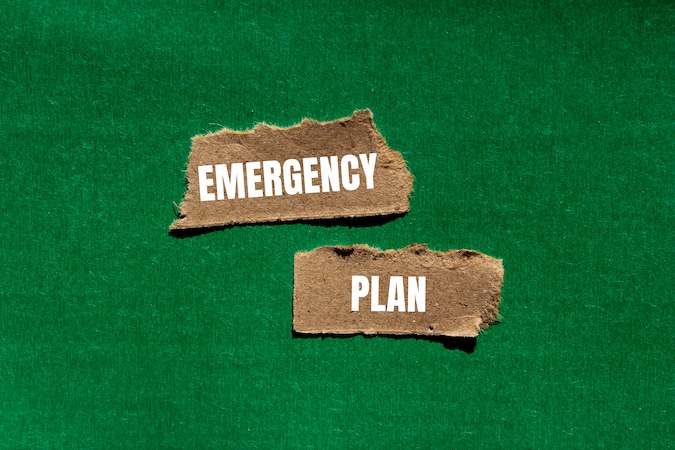
Dealing with a Medical Emergency Action Plan

When emergencies strike, having a clear plan and understanding your insurance can make a difference. Learn practical steps and ensure you’re prepared to manage urgent situations smoothly and effectively with SelfGood , your trusted resource for comprehensive health insurance options.
Medical emergencies can happen at any time, and being prepared with a comprehensive action plan can make all the difference. In this guide, we’ll walk you through identifying emergencies, taking immediate action, and using your insurance to get the best care. SelfGood provides expert advice and resources to empower your health coverage choices.
Key Takeaways:
- Always recognize the signs of a true medical emergency.
- Take immediate and appropriate actions, including basic first aid and calling for help.
- Understand how your insurance plan covers emergencies, including ER visits and ambulance services.
- Organize and keep critical medical information accessible.
- Learn how to communicate with healthcare providers and manage medical bills effectively.
Understanding What Constitutes a Medical Emergency

Not every urgent health issue qualifies as a medical emergency. Knowing what to watch for can save lives and ensure prompt medical intervention.
What Is a Medical Emergency?
A medical emergency is any condition that poses an immediate risk to life or long-term health . Examples include heart attacks, strokes, severe bleeding, difficulty breathing, or major trauma. Recognizing these symptoms can be crucial.
Examples of Common Emergencies
- Heart Attack: Symptoms like chest pain, shortness of breath, and dizziness.
- Stroke: Sudden numbness, confusion, or difficulty speaking.
- Severe Allergic Reaction: Swelling, difficulty breathing, or hives.
- Trauma or Injury: Severe cuts, broken bones, or head injuries.
Always act quickly. If in doubt, seek emergency medical assistance to prevent complications.
Immediate Steps to Take During a Medical Emergency
Knowing the proper steps can prevent the situation from worsening. Here’s what you should do:
Step 1: Assess the Situation and Call for Help
Evaluate the severity of the incident. If someone is unconscious or in critical condition, call 911. It’s better to be safe than sorry—never delay seeking medical help if the situation appears life-threatening.
Step 2: Provide Basic First Aid
Use your first aid knowledge to help stabilize the patient until professionals arrive.
- CPR: If the person isn’t breathing, start chest compressions and rescue breaths.
- Control Bleeding: Apply pressure to wounds to minimize blood loss.
- Epinephrine Administration: For severe allergic reactions, use an EpiPen if available.
Step 3: Notify Emergency Contacts
Ensure a designated person contacts family members or close friends. It’s essential to have a list of emergency contacts readily available.
Preparing Your Emergency Action Plan
An action plan ensures you’re ready for the unexpected. Here’s how to create one:
Create a Medical Emergency Checklist
Include vital medical information:
- Medical History: Chronic conditions, past surgeries.
- Medications: Names, dosages, and administration times.
- Allergies: Drug, food, or environmental allergies.
- Primary Care Doctor: Contact details for your healthcare provider.
Set Up Emergency Contact Information
Organize your emergency contact list with names, phone numbers, and their relationship to you. Store it in your phone and have a printed version in your wallet.
Make Copies of Important Documents
Keep copies of your health insurance card, ID, and any advance directives. These should be accessible in physical form and stored digitally on your phone or in secure cloud storage.
Keep Your Action Plan Accessible
Consider using health apps to store your plan. Ensure family members know where to find it. Label your phone’s emergency contacts as “In Case of Emergency (ICE).”
How Health Insurance Works in Medical Emergencies
Understanding your insurance coverage can prevent financial surprises and ensure you receive necessary care.
What’s Covered in an Emergency?
Most insurance plans cover emergencies regardless of whether the provider is in-network. However, you may still be responsible for copayments or out-of-network fees. Review your insurance policy for emergency service terms.
ER vs. Urgent Care
- ER: Use for life-threatening emergencies like heart attacks or severe injuries. Expect higher costs and longer wait times.
- Urgent Care: Ideal for less severe conditions like minor fractures. More cost-effective and often quicker.
Out-of-Network Care and Surprise Billing
In an emergency, care received out-of-network may incur additional costs. Be prepared to discuss this with your insurance provider afterward to minimize expenses.
Ambulance Coverage
Ambulance rides are usually covered if deemed necessary. Check your policy details to understand cost-sharing responsibilities. If the ambulance is out-of-network, higher fees may apply.
Communicating with Medical Professionals and Insurance Providers

Clear communication helps ensure you get the right care and insurance processing goes smoothly.
Share Accurate Medical Information
Always tell healthcare staff about allergies, ongoing treatments, and chronic conditions. This information helps doctors avoid complications and choose the right care.
Notify Your Insurance Provider
Contact your insurance company as soon as possible. Some policies have specific notification windows, so acting promptly can prevent coverage issues.
Pre-Authorization and Emergencies
In true emergencies, pre-authorization is usually not required. Confirm with your insurance if additional treatments need approval afterward.
Handling Medical Bills After an Emergency
Bills can be overwhelming, but understanding them can save you money.
Check for Errors
Carefully review bills and compare them to your Explanation of Benefits (EOB). Look for duplicate charges or services you didn’t receive. Contact the billing department for corrections.
Negotiate Bills
Many providers offer payment plans or cash discounts. Don’t be afraid to ask. Medical billing advocates can also help negotiate on your behalf.
Explanation of Benefits (EOB)
Your EOB isn’t a bill but outlines what your insurance covers. If you spot issues, such as denied claims, contact your insurance provider to appeal.
Preventive Measures to Avoid Future Emergencies
Prevention reduces the likelihood of emergencies. Here’s how:
Regular Checkups and Screenings
Routine health screenings catch potential issues early. Talk to your doctor about age-appropriate tests.
Stay Vaccinated
Vaccinations prevent serious illnesses. Consult your healthcare provider to stay up-to-date on immunizations.
Maintain a Healthy Lifestyle
Exercise, eat well, and manage stress. These simple practices can keep you healthier and less prone to emergencies.
Final Thoughts
Emergencies are stressful, but preparation makes them manageable. Create a solid emergency action plan, understand your insurance coverage , and communicate effectively with medical professionals. These steps empower you to handle emergencies confidently and minimize financial impact.
Remember: Being proactive now ensures peace of mind in the future.
Frequently Asked Questions
What should I include in my emergency action plan?
Include your medical history, a list of medications, known allergies, and emergency contacts. Also, have copies of insurance information and any necessary medical directives.
How do I know if an emergency room visit will be covered by my insurance?
Most insurance policies cover true medical emergencies, even if the provider is out-of-network. Check your plan’s details and contact your insurer for specific coverage information.
What if I receive care at an out-of-network hospital?
Emergency care at out-of-network hospitals is typically covered but may come with higher out-of-pocket costs. Review your insurance policy and consider negotiating the bill if necessary.
Sources:
- Healthcare.gov . (n.d.). Coverage for emergency services.
- Consumer Reports . (n.d.). Tips for negotiating medical bills .
- KFF . (n.d.). Surprise medical bills and balance billing.




